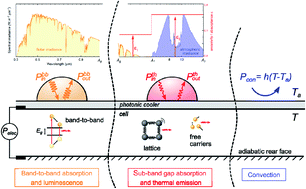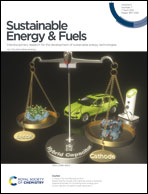Radiative sky cooling of solar cells: fundamental modelling and cooling potential of single-junction devices
Abstract
Radiative sky cooling is a promising method to passively cool photovoltaic cells under outdoor conditions, thus improving their power conversion efficiency along with their lifetime. Analyses for some devices have suggested temperature reductions of several degrees thanks to this method, but they remain insufficient to estimate the cooling potential for different technologies according to their basic electrical and thermal properties. Furthermore, the ideal thermal emissivity profile that permits the best cooling has never been studied in detail. This paper investigates the effect of radiative sky cooling on single-junction solar cells from a general perspective. A numerical model based on detailed-balance theory and heat balance allows us to estimate the temperature and the electrical power output for different cells. A focus is made on devices based on three representative solar absorber materials: silicon, gallium arsenide, and perovskite. We first demonstrate that a broadband emissivity profile (a blackbody-like emissivity) overcomes the performance of a selective emissivity profile (with a non-zero emissivity only in the 8 μm to 13 μm atmospheric window) in most scenarios. Secondly, we quantify the potential of this ideal emissivity profile in terms of temperature reduction and electrical power enhancement. We study the influence of both the thermal emission and sub-band gap parasitic solar absorption on thermal management. This allows us to predict the possible performance enhancement of a device according to its initial emissivity profile. Material specific effects such as band gap dependance with temperature and non-radiative recombination are also discussed. The sensitivity to heat exchange on the rear and sides of a device is quantified. This study provides a fundamental basis for radiative sky cooling of photovoltaic cells and a guideline for further simulation-based studies.



 Please wait while we load your content...
Please wait while we load your content...